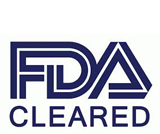President’s Message
The first needle stick injury I have sustained happened more than twenty years ago when I was an oral surgery resident. I was called in to evaluate facial trauma on a patient who was involved in a motor vehicle accident and had sustained multiple injuries. When I got to the ER, there was a young patient who was intoxicated on alcohol, combative. Four point restraints were placed on this patient, there were contusions and lacerations in the facial area, medical history was still being obtained, chest x-ray was being filmed... A nearby ER nurse said, "Don't just stand there. Start an IV line or something." I had proceeded to start an IV line. As I stuck an angiocath on his arm, the patient jumped and I stuck myself with the same needle. This was the time before the CDC came out with protocols for the needle stick injury, and hepatitis C was known as non-A, non-B hepatitis. The first level trauma center can be an intimidating place, especially for those who just started their residency.
The second needle stick injury I had sustained happened a few years after my residency. We were extremely busy that day and behind schedule. The bloody instruments on the trays were just piling up no matter how fast the assistants worked. We were nearly running out of sterile instruments. I was compelled to help to put away some instruments on the trays. Underneath the bloody gauzes, there was an uncapped needle. As I was recapping the needle, I stuck myself. This was the time before the one hand scoop technique was taught or recapping devices were available. Afterward, I came across friends who also had sustained needle stick injuries and were undergoing mental anxiety.
It has been over 10 years since the concept of the LeEject system has been conceived and the first prototypes were made. Making the LeEject system commercially available was thought to be the remaining challenge. The prototypes were shown to the US manufacturers of the syringes and dental needles. My personal health problems, family priorities, and setbacks in the dental practice prevented me from moving on. Eventually the lack of responses prompted me to find other manufacturers overseas who shared my dream and could manufacture the products at reasonable costs. Financing the moldings and the new assembly line was a big step to take. After the initial batches, these products had to be re-designed and modified until they were satisfactory. Marketing this new innovative product is also challenging. In this unchartered course, it has been difficult to maintain enthusiasm despite delays and disappointments.
Several people have contributed to the design and modifications of the needle and syringe system. Initially, it would have been impossible without the help of my patent lawyer, Mr. Chris Garvey. I appreciate the needle and syringe manufacturers on their tireless supports despite the several modifications. Also, I owe appreciation to the advertising firm, Crebrand, and MDI Consultants, especially Ms. Maria Griffin, who has been helping us with the FDA application. The next contributor would be the FDA team who has asked many valid questions, and the process helped us to prepare revisions and modifications. Lastly, I appreciate the many evaluators who have raised many valid points and we have tried our best to meet those questions and criticisms. We are grateful that we had the chance to modify and upgrade the LeEject system.
Few U.S. dental schools are willing to evaluate and use the system. On the other hand, the responses from the dental hygiene programs have far exceeded our expectations and many are waiting for immediate use. We have set aside 10,000 syringes and 500,000 needles to be distributed to US dental schools and hygiene programs, free of charge after FDA clearance. The FDA is trying to protect dentists and hygienists from possible human errors in using the LeEject system, and we are trying to protect the dental healthcare professionals from the preventable needle stick injuries. The major US distributors have shown interest in carrying the LeEject system and we have made sales in other countries and are making strong progress to sell in Europe. After May 2013, the EU countries are banning the recapping of the used needles.
Our goal of reducing the needle stick injuries in the dental community is real and important, and hopefully many people can benefit from the LeEject system including the developing countries.
We started this business in May of 2011 and we made some progress. Currently, we are working on other projects such as a safer and easier delivery of injectable drugs, new different formulas of local anesthetics for dentistry, and new areas that cannot be disclosed at this time. Rather than drawing up drugs and labeling from the vials and ampules, the empty cartridge and needle can be discarded together. The cartridges and the plastic syringes, which can be color coded, would reduce human errors, save time and medical wastes, especially for busy OR's and ER's. For the local anesthetics in dentistry, wouldn't it be nice if we could come up with a formula where the numbness would disappear after one hour and have a wide margin of safety? For a prolonged procedure, dentists could use a local anesthetic, which has rapid onset, long duration and good hemostasis.
We are "staying hungry and foolish" as the late Steve Jobs advised.
Sincerely,

Alexander Lee, DDS
Diplomate, American Board of Oral & Maxillofacial Surgery

